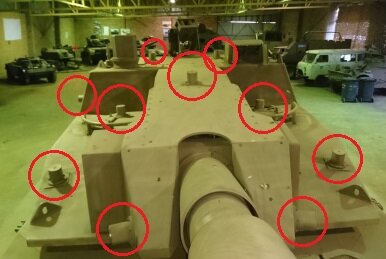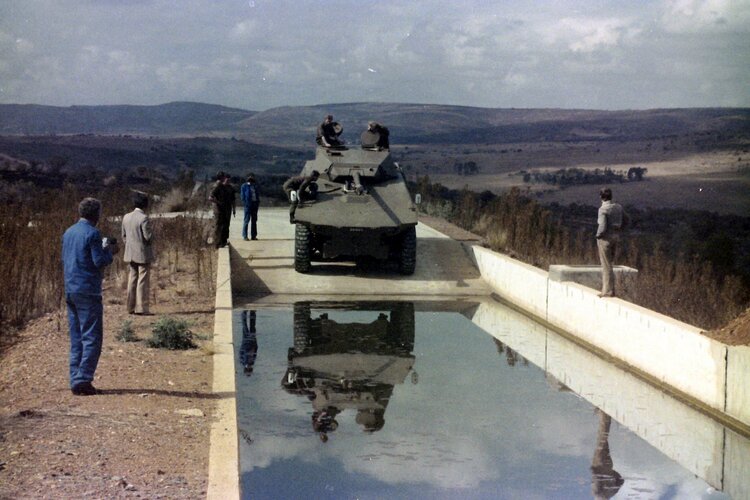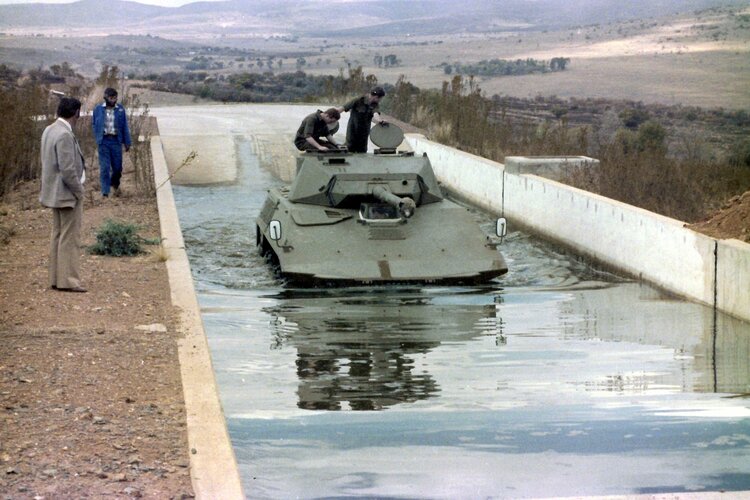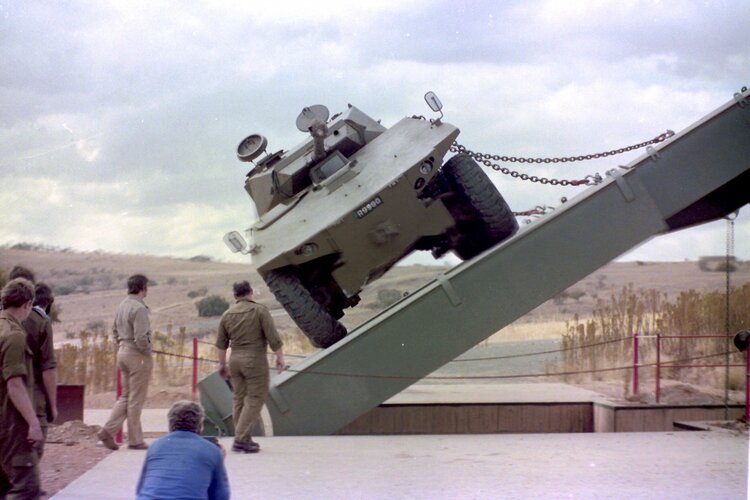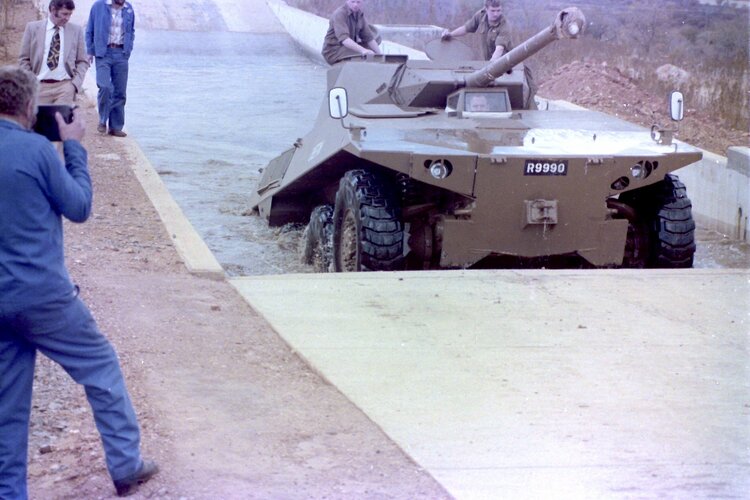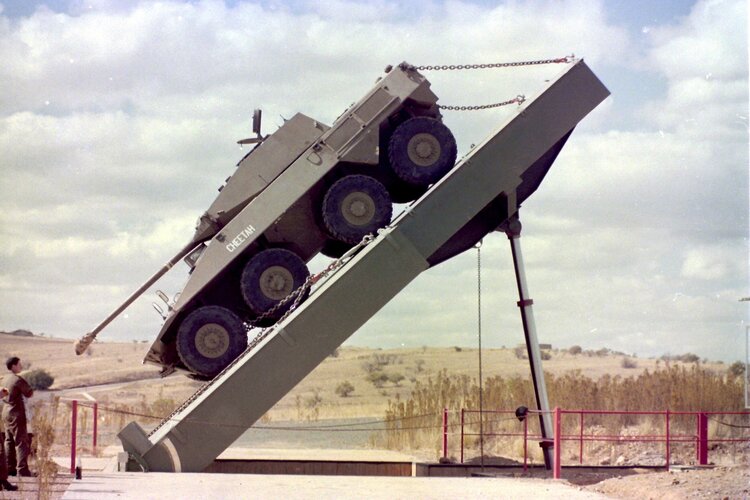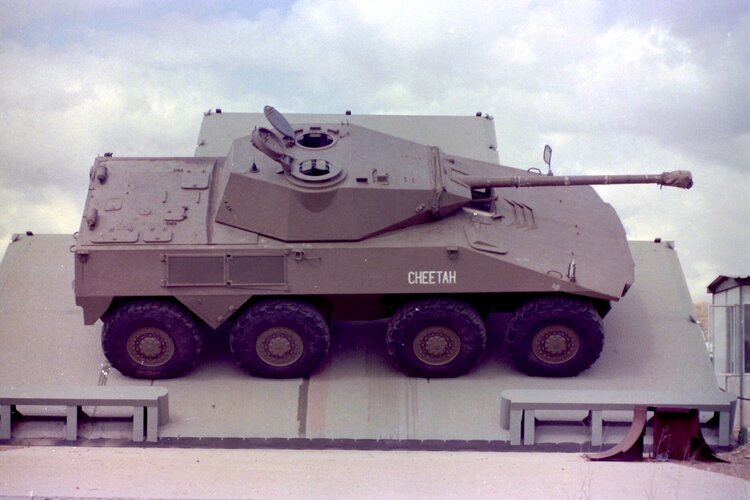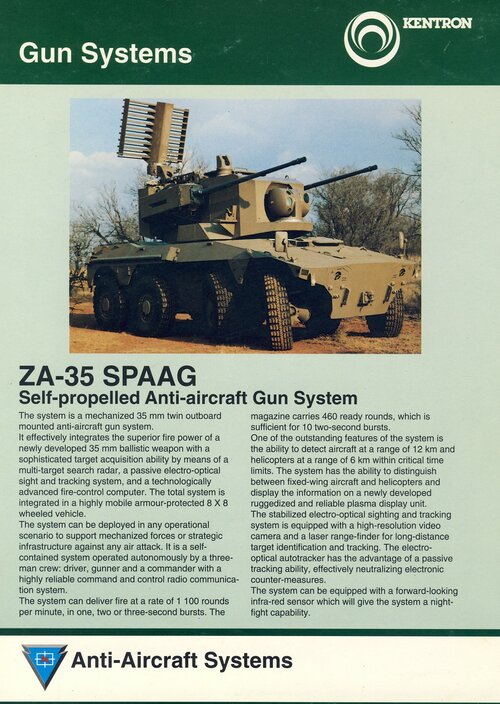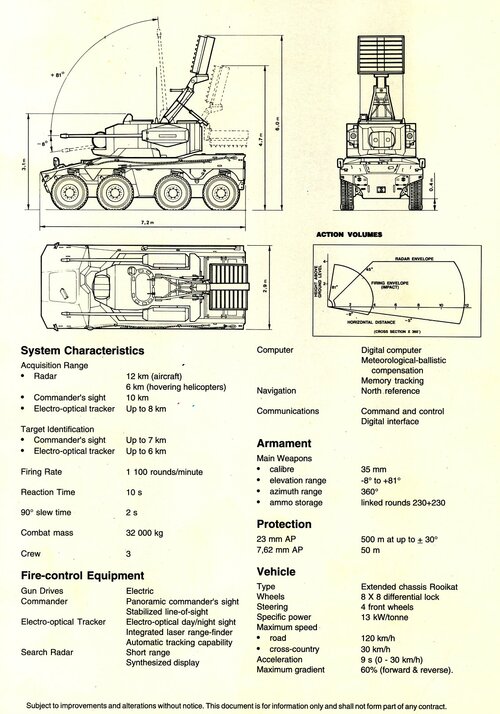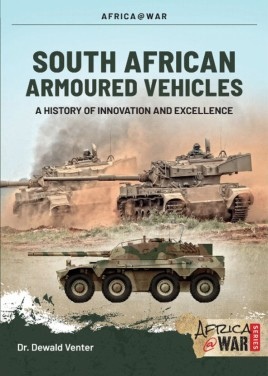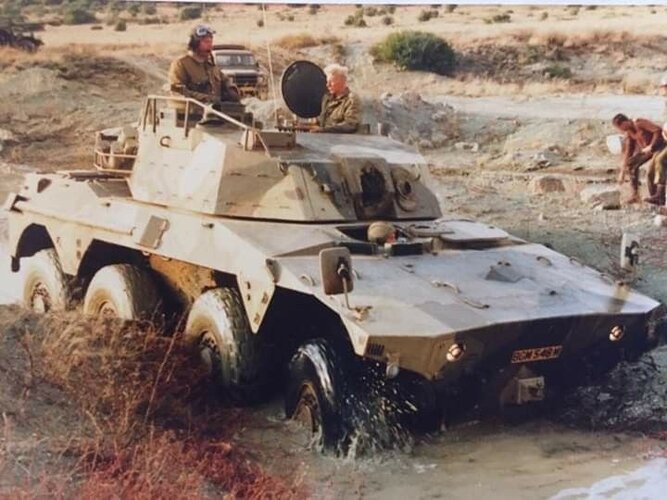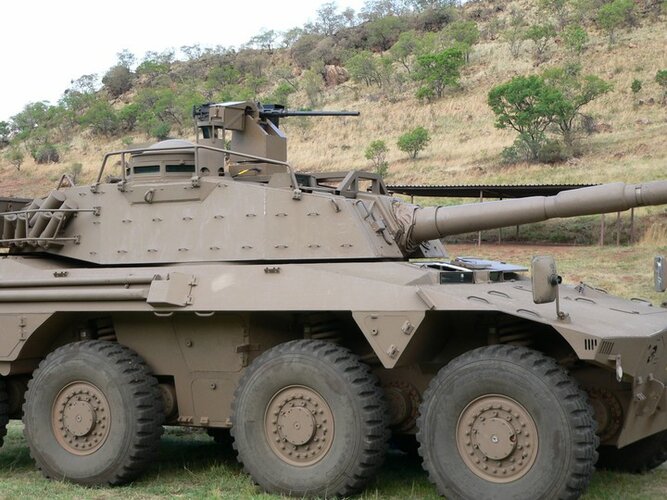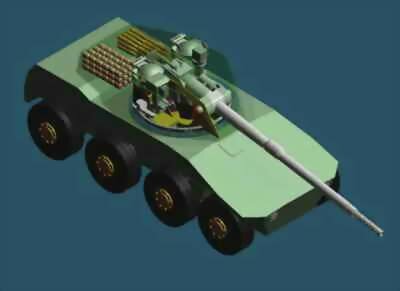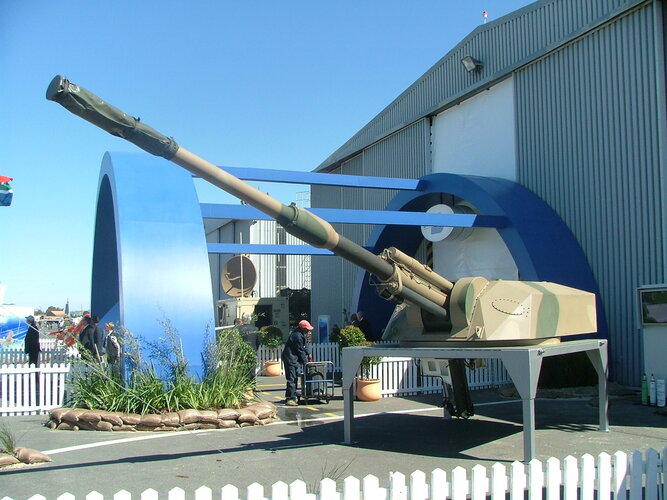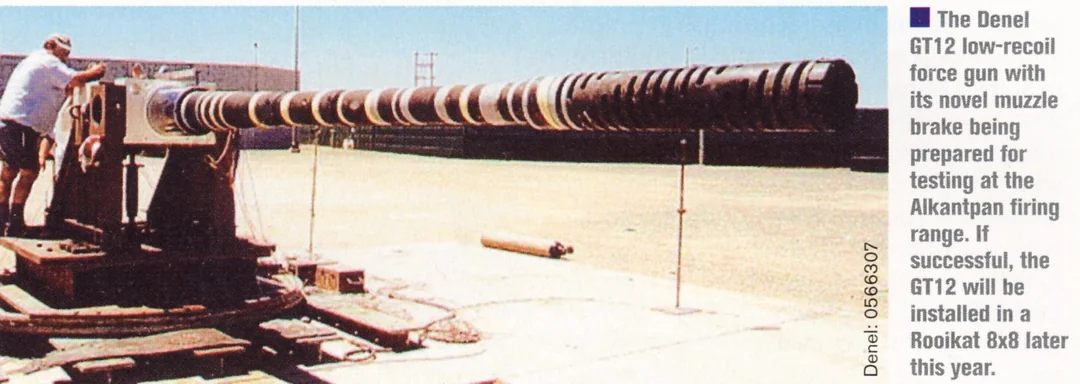Graugrun
ACCESS: Top Secret
- Joined
- 17 May 2011
- Messages
- 854
- Reaction score
- 1,197
Just borrowing this pic from Kaiserbill's post #235 - I meant to write about this sooner.. I've circled some of the strange bumps seen on this experimental vehicle - they are in fact part of an experimental self protection system (they were shown to me while I climbed over it by one of the current School of Armour members). They pop out spinning water sprayers that instantly cover the vehicle in a fine mist of water (and some sort of special additive), that instantly blanks out most of it's thermal/infra-red signature and to a large degree also it's visual signature. This was to work in conjunction with the Avitronics LED self protection system, as part of it's 'Soft Kill' protection layer.
It apparently worked pretty well in tests, however the carrying of extra (special) water tanks for the spray, the complex piping system, as well as the concern that the 'proud' spray nozzles would get damaged in the harsh African bush, put paid to the project as a feasible one. I cannot remember now what they system was called - but will try to find it out again.
You can pull out the extension (pop out) piece, with the actual water sprayer now extended and visible - which I took a photo of to display with this explanation, as soon as I can find it again, I will add it to this thread...
It apparently worked pretty well in tests, however the carrying of extra (special) water tanks for the spray, the complex piping system, as well as the concern that the 'proud' spray nozzles would get damaged in the harsh African bush, put paid to the project as a feasible one. I cannot remember now what they system was called - but will try to find it out again.
You can pull out the extension (pop out) piece, with the actual water sprayer now extended and visible - which I took a photo of to display with this explanation, as soon as I can find it again, I will add it to this thread...

